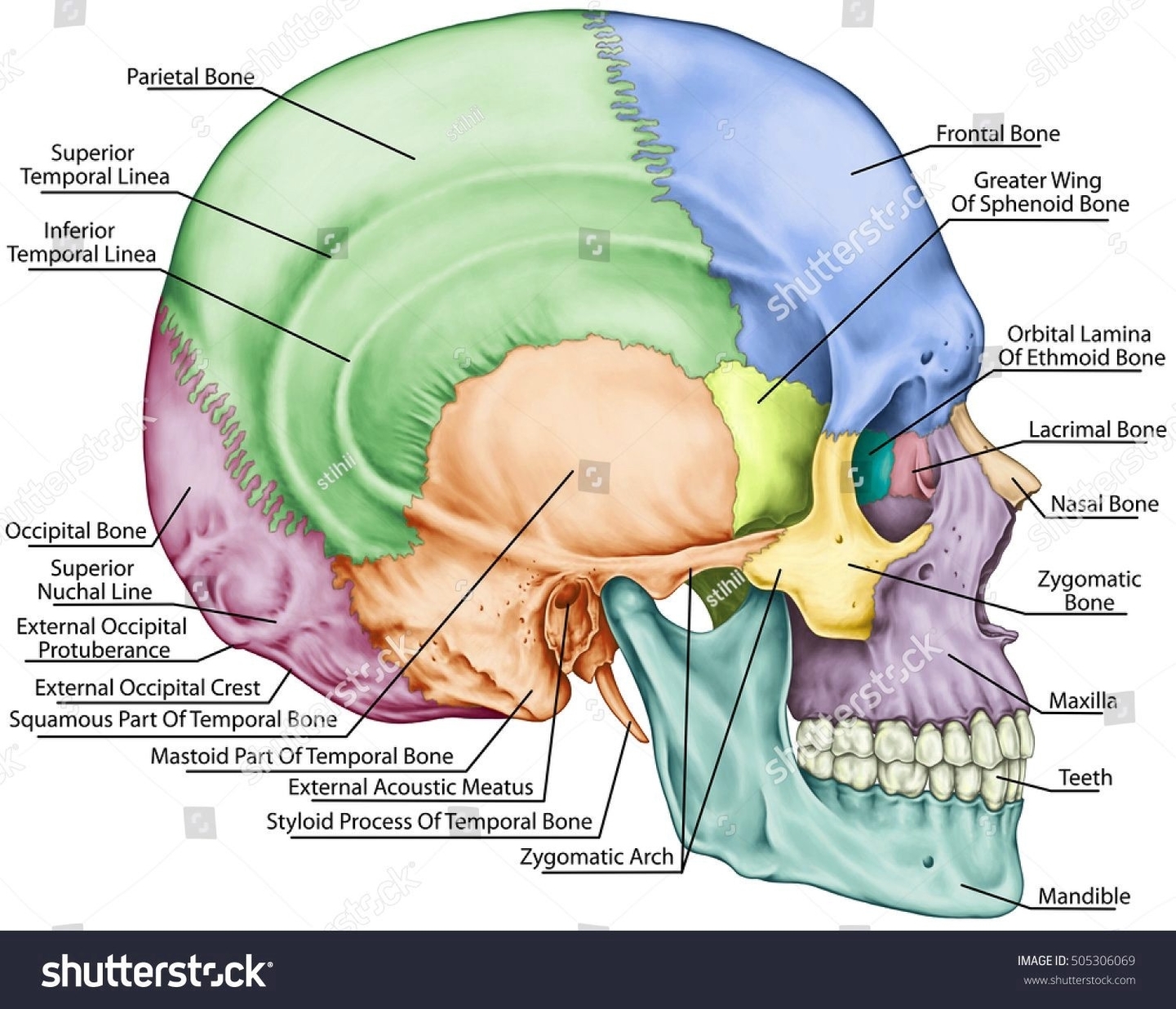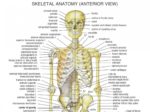The human skull, also known as the cranium, is a complex structure that serves as the framework for the head, housing the brain and facial structures. It is composed of 22 individual bones, eight of which are cranial bones.
Anatomy of the Cranium
The cranium is located at the top of the head and is somewhat spherical in shape. It is divided into two main parts: the cranial roof and the cranial base. The cranial roof consists of the frontal, occipital, and two parietal bones, while the cranial base is composed of the frontal, sphenoid, ethmoid, occipital, parietal, and temporal bones. These bones are fused together to provide a secure enclosure for the brain. However, in infancy, the cranial bones have gaps between them, connected by connective tissue, allowing the brain to grow and develop before the bones fuse together.
Connected to the cranial bones are facial bones that give structure to the face and a place for the facial muscles to attach. Together, the cranial and facial bones make up the complete skull.
Function of the Cranium
The primary function of the cranium is to protect the brain, which includes the cerebellum, cerebrum, and brain stem. It also provides a surface for the facial muscles to attach to. The cranium houses the cranial nerves, which originate inside the cranium and exit through passages in the cranial bones. These nerves are essential to everyday functioning, including smelling, seeing, and chewing.
Associated Conditions
There are several conditions associated with the cranium, including craniofacial abnormalities, cranial tumors, and cranial fractures. Some craniofacial abnormalities result from the skull bones fusing together too soon or in an abnormal way during infancy. For example, craniosynostosis is a condition in which the sutures of a babys skull close too early, causing issues with brain and skull growth.
Conclusion
The human cranium is a marvel of biological engineering, providing robust protection for one of the most vital organs of the body, the brain. Its complex structure and function underscore the intricate design of the human body. Despite its strength and durability, the cranium is susceptible to various conditions and injuries, emphasizing the need for protective measures in high-risk activities and the importance of medical advancements in treating cranial conditions..


